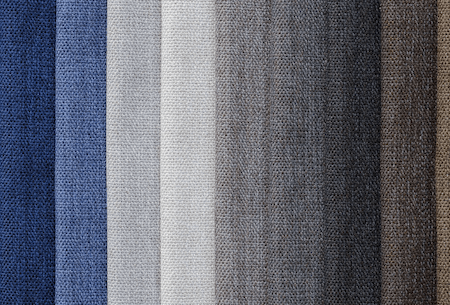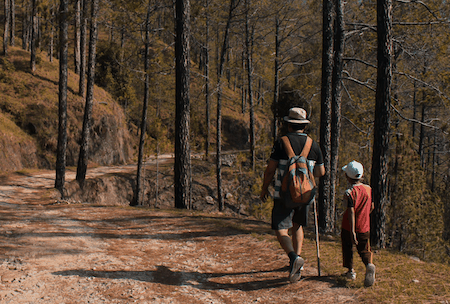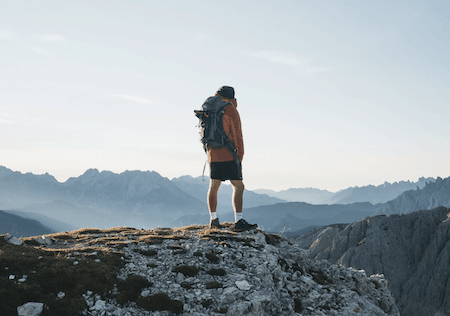The sun is burning outside with scorching heat and you are about to sail for your next hiking trip. The preparation for hiking in summer is quite different than in winter or any other season.
One of the most important concerns while hiking in summer is to decide what to wear to feel lighter and colder under the warmth of the sun.
So, in this article, we will be giving you a comprehensive idea about what to wear hiking in summer.
From your clothing essentials to your hiking accessories, whatever you usually wear and carry as a hiker, this discussion encompasses all those areas to make your summer trip much easier and comfortable.
Important Factors When Choosing Summer Clothing
Before you invest your valuable bucks for buying summer hiking clothes, you have to keep in mind these two following factors:
Comfort
In summer, it is more preferable to go with loose-fitting clothes which are usually light-colored. If you love to wear black, forget about it while you are hiking under the sun in summer.
Because, black absorbs all the heat inside, making you suffocate out of hot and sweaty feelings all around.
However, it also won’t be a wise decision to wear cotton while hiking, because it absorbs all the sweat just like a sponge when you get wet out of the heat.
It leads to quick temperature loss in your body and thus hyperthermia can hit you in the process.
So, make sure your hiking clothes are simple, breathable, and comfortable to wear, that’s your first priority for all seasons, not just summer.
Safety
Depending on your hiking area, you must consider the type of clothing you will wear during the whole trip.
Like, some places are full of reptile threats like snakes, and some others can come with Lyme disease too.
In such a scenario, it would be a wise decision to wear long sleeves and long pants that are specially made to be insect repellent.
So, even if it’s summertime, safety comes first as a precaution.
Material Tips For Summer Trip
Before you get to know summer-friendly clothing essentials, let’s talk about their materials first which will give you a comfortable experience all the way.
Merino Wool
It might sound weird but yes, merino wool clothing material can keep you cool when the heat is increasing.
This clothing material is especially known for its temperature regulation, breathability, non-itchy feeling, and odor resistance features.
So, if your clothes are made of merino wool, it might provide you a comfortable experience all the way.
Synthetics
Don’t get me wrong, but yes, synthetic materials can make your journey quite breathable and comfy.
To be more specific, synthetic materials like polyester and nylon are loose, light, and breathable which get dry easily after being wet under sweat.
UFD Fabric
There are a good number of clothing fabrics that can block the sun’s heat from reaching your skin.
But, when it comes to UV rays, many of them fail, as these rays can still penetrate through them.
In order to save your skin from UV rays, there comes a technology called UFD that can protect your body from such direct contact.
Protect yourself from the heat and harmful rays by wearing clothes that come with UPF 50+, UPF 30, or at least UPF 15 sun protective fabric technology.
Moisture Wicking Materials
There are certain clothing materials that are specially made with moisture-wicking technology.
Wearing such fabric can offer you great relief under the heat of the sun, as they keep the moisture away and your skin doesn’t get wet that easily. It remains dry for hours.
Odor Resistant Materials
The more you sweat, the more it will produce body odor, especially when you are hiking for hours.
And, manufacturers have taken this very thing into consideration and made clothes that are almost odor resistant.
Nylon and polyester fabrics find it hard enough to deal with odor, even though they give you a light, breathable clothing experience.
You better select clothes which are known as driMOTION or Polygiene. These fabric materials help you to fight against body odor and offer you a fresh hiking experience.
Ventilation Technology
The more your body comes into contact with easy airflow, the more it feels fresh and alive.
Before you sail for your hot summer trip, pack some clothes with ventilation panels that can provide you a fresh airflow.
These materials help you to enjoy inner comfort even when you are walking under the sun.
Dress Code For Summer Hike
So, what kind of dresses should you wear while hiking?
Well, let’s talk about them one by one.
T-Shirts
Start your day with a simple, loose t-shirt that can protect your shoulder from the heat of the sun. Moreover, it can save your shoulder from the potential friction against the straps of the backpack.
As we have already mentioned earlier, avoiding cotton would be a better choice in summer, picking up synthetic ones would be more preferable.
Whether it is cheap or pricy, it doesn’t matter, until and unless it provides the desired comfort as you require. This is totally a personal choice when it comes to picking up t-shirts.
But personally speaking, I find it more preferable when the shirt has no pockets, buttons, or frills and is not even tight-fitting.
Long Pants
When it comes to picking up the right pants for your hiking trip, it mostly depends on the nature of your hiking area.
Hiking areas are usually not natural human pathways, those areas might surprise you with wildlife diversities. So, we always suggest wearing long pants or, summer hiking leggings that can cover your legs from all those threats.
However, wearing shorts in summer might sound comfier if you are not hiking to a reptile-prone area.
But, there is always a good chance to encounter mosquitos, ticks, bugs, and other forms of insects which can irritate your legs when they are open.
Not to mention but, the heat of the sun would be directly burning the skin when you wear shorts.
So, to save your legs from sun heat, insects, reptiles, weeds, branches of trees, or any other form of danger, it’s better to wear long pants than shorts.
Besides, you can easily add the holster to your pants.
Seamless Socks
When choosing your socks, you must consider the fact that they are breathable and seamless.
Because to keep your feet cold and comfortable, there must be air regulation access and it can only be possible if you use such socks.
Other forms of socks would increase the heat inside and make the journey uncomfortable.
Hiking Shoes
Should you hike with sandals or hiking shoes? Well, the choice is yours, but it largely depends on the quality of the trail and other environmental factors.
If you are wearing hiking shoes, then they must have the shock-absorbing capacity, breathability, and strong heel protection all around.
You can also consider wearing running shoes specially made for trail hiking with a toe cap.
The main factor here is, wearing such footwear that is solid enough to fight against the roughness of the trail and comfortable enough to give you relief out of the heat.
Now you know what kind of hiking shoes you need to buy and wear.
Neck Gaiter
A neck gaiter could be your ultimate hiking buddy with odor resistance, fast-drying, and lightweight features to protect your neck from sun heat.
If things are getting too hot, you can soak the gaiter into the water and wear it to keep yourself cool around your neck.
Brimmed Hat
A brimmed wide hat can work as a protective shadow all around your head and neck. It will be a good choice to wear a hat that comes with a UPF protective layer.
It helps to regulate the air inside out as a form of ventilation. If you are not comfortable with hats, then at least wearing a cap might help you a lot against the heat.
Hiking Accessories
Other than your clothing essentials, there are some hiking accessories as well that you need to pick consciously.
Lightweight Backpack With Harness
The very first hiking accessory you need to be concerned about is your backpack. Whether it is summer, winter, or rainy season, picking up a lightweight and cheap backpack is always important to lessen the burden on your back.
For summer hikes, it’s also important to pick a pack that comes with an appropriate harness to maintain good air circulation.
When you have a good circulation of air between your back and your pack, it keeps you cool and comfortable.
The weight can be between 28 to 75 L depending on your capacity of carrying your backpack.
Water Bladder
When you are hiking under the hot sun, you will need water frequently to be hydrated to keep going.
So, make sure you are equipped with a water bladder that can at least hold up to 2 L of water.
Sunglasses
Your eyes need to be protected as well and the best thing you can do about it is to wear glasses that can fight against UVC, UVA, and UVB rays.
In that case, you can go with Polaroid glasses that offer you such protective features for your eyes.
Sunscreen
Even if you are wearing all those summer-friendly clothing, still there are body parts that will be getting exposed to the heat of the sun.
So, you better apply sunscreen cream that comes with at least UPF 50. Apply the cream before you start your day and also reapply it a few times throughout the day.
Rehydration Solutions
When you keep on hiking on a hot summer day, it is obvious that you will be sweating a lot. The more you sweat, the more you will be losing electrolytes in your body.
So, to make your body rehydrated and get back electrolytes into your system, take some oral rehydration.
This will provide your body with enough sodium, potassium, and chloride that you were losing the process. It helps you keep going with full energy.
First Aid Kit Box
Even if you are the most conscious person on this planet, things can go wrong and accidents can happen.
So, while you are hiking on unknown trails under the hot sun, don’t forget to carry a first aid kit box with you.
If you are not interested in bringing every piece of equipment, then at least bring tweezers, band-aids, and compression bandages for primary treatment.
A Raincoat
Summer and Rainy seasons are interchangeable sometimes as they change their positions all of a sudden.
So, it’s not a strange thing if you see the sky is getting cloudy suddenly and raining in summer.
You better carry a raincoat with you to avoid getting wet under the rain all of a sudden.
Some Summer Hiking Tips
Though you are totally prepared with all your clothing and accessories for a summer trip, you must follow some tips to make the best out of it.
Such as:
- You should avoid hiking during the hottest period of the day as it might make your body weaker to continue for long.
- You should bring enough water to be hydrated from time to time. Lack of water might make the whole journey tough and standstill.
- Oftentimes, there are several routes of a hiking trail, you better walk through the easiest one. The smart route may include plenty of short brakes and shades of trees so that you can rest in between and continue for long.
- If you somehow notice your body is experiencing nausea, dizziness, strong headache, stop and take a rest. Don’t push yourself hard when your body can’t bear the pressure.
- Don’t forget to take small breaks in between to save yourself from being exhausted or too tired to continue. It’s not just about finishing the trail, rather about enjoying the journey being safe and sound.
Final Words
Hiking is fun when you are fully prepared with all your necessary items to survive against wild nature.
When the sun is beating everything else down and everyone is looking for cooling comfort, it is pretty much obvious that you will ask yourself as a hiker, what to wear hiking in summer!
Well, the whole article basically answered all of your curious questions regarding it. And, we hope you enjoy your next summer trip being totally prepared for it.




